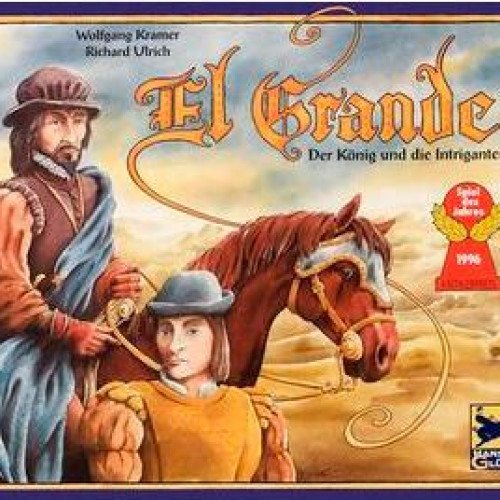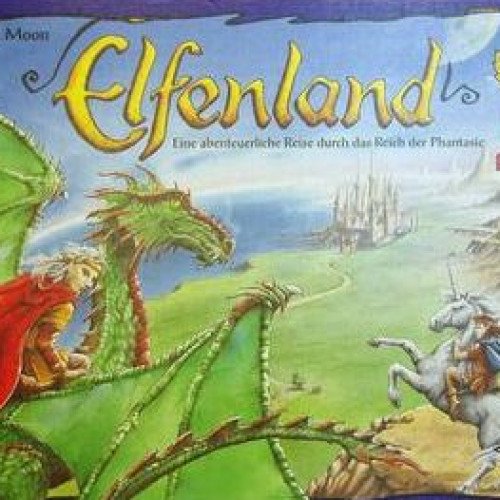"EL GRANDE" vs "ELFENLAND"

EL GRANDE
El Grande is a German-style board game for 2-5 players, designed by Wolfgang Kramer and Richard Ulrich, and published in 1995 by Hans im Glück in German, by Rio Grande Games in English, and by 999 Games in Dutch. The game board represents renaissance-era Spain where the nobility (the Grandes) fight for control of the nine regions. El Grande was awarded the Spiel des Jahres prize and the Deutscher Spiele Preis in 1996. The game is played in nine rounds. Three of these (rounds 3, 6, and 9) are scoring rounds, when player scores are counted according to their positions within the various regions. When the game is played with two players, it can be rather fast-paced. If five players participate, the game becomes very complex and challenging, as it becomes almost impossible to "do the mathematics" on the regions, and players team up and compete to keep others from winning, or to score more points for themselves. There are no dice in the game, and players have many chances to influence the turn order. Thus the game is all about decisions. Often the path to scoring more points is clear, but sometimes it can be wiser to prevent opponents from scoring.
Statistics for this Xoptio

ELFENLAND
Elfenland is a German-style board game designed by Alan R. Moon and published by Amigo Spiele in German and Rio Grande Games in English in 1998. It is originally based on his earlier game Elfenroads (published by White Wind), but since Elfenroads took about four hours for a game, the play was simplified to reduce the time closer to an hour, making it appeal more as a family game. It won the Spiel des Jahres award in 1998 and won the third place Deutscher Spiele Preis award in 1998. The game is played by 2–6 players, with 4–5 making for the best game. Each player tries to reach as many cities as possible and then return to his "home city." Home cities are drawn at the beginning of the game from a pack of city cards and they remain hidden throughout the game. The game is thus reminiscent of the traveling salesman problem. Players move using transportation cards. Elves can travel on a wide variety of vehicles including troll wagons, elf cycles, rafts, giant pigs, unicorns, dragons and magic clouds. Different types of transportation will travel better over different terrain, and some methods of transport cannot cross certain terrains at all. There is only one problem: you cannot travel over a route (except water) unless there is a tile on that road, and only the type of transport shown on the tile can be used to move along that road. Before anyone can move, tiles are drawn and laid out across the board. This part is the one that calls for the most strategy, as players try to line up their tiles to set up a nice route for themselves and a difficult one for their opponents at the same time. As well as normal tiles, each player receives one trouble tile for use during the game. These hinder other players by forcing them to use an extra transportation card at that point. Also, any player can simply use any three cards to pass over any route that has a tile already there, allowing the type of transport shown on the tile to be ignored. The game has subtle strategies to make others navigate through the cities. When a player puts a transportation type you don't want in your path then you have to find a way around it. All of the aspects of the game make for a very exciting race to visit the most cities while never quite being sure who is winning until the last round.